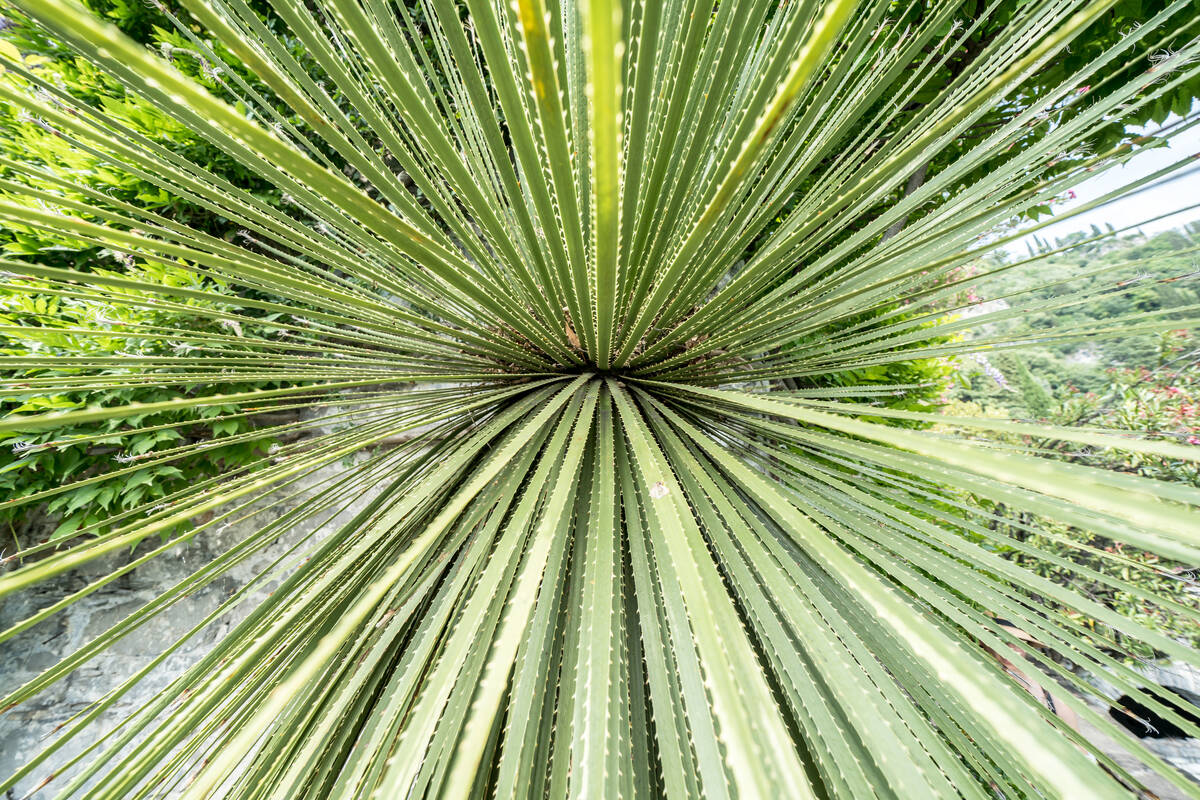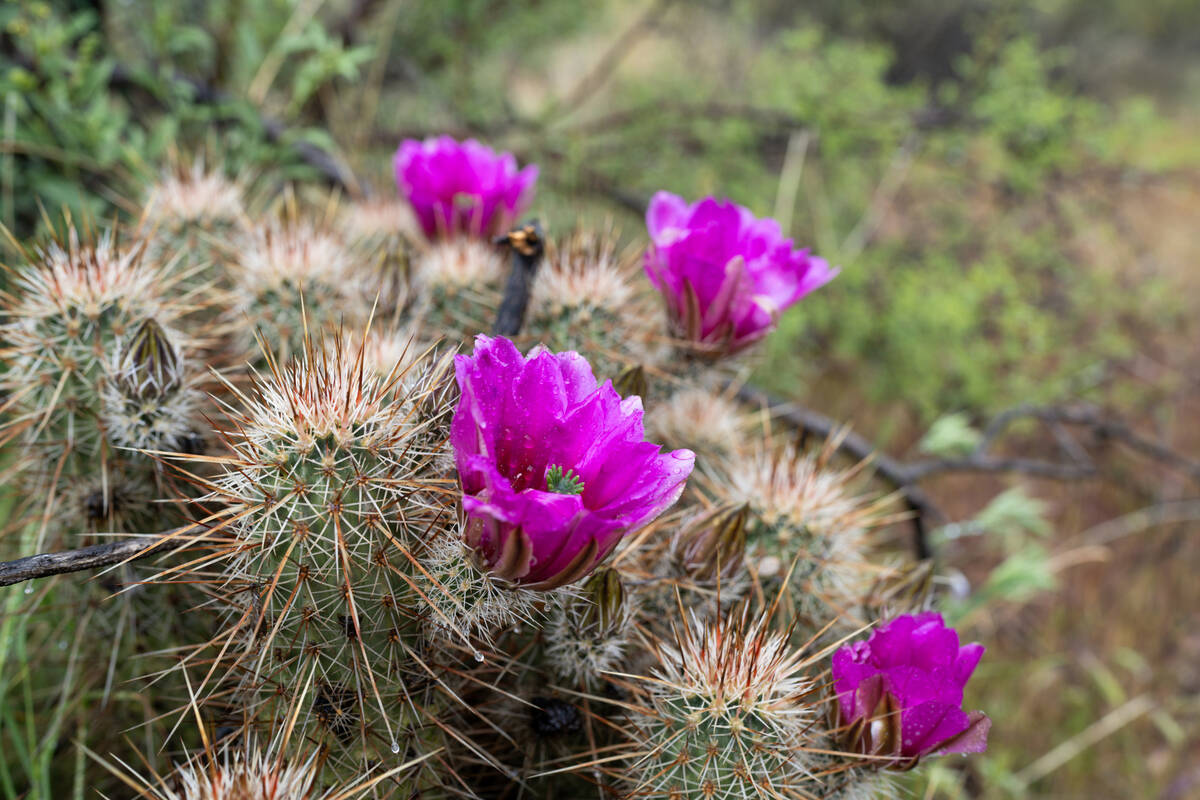Why did my desert spoon suddenly turn brown?
Q: I moved into this house seven years ago and was told my desert spoons were 18 years old. The multitrunked one was beautiful until this summer when it turned brown. Is 25 years their normal lifespan?
A: Desert spoon is an agavelike plant (like agave, in the asparagus family) that has an average life span of around 40 years. Desert landscapes need additional deep watering only three or four times each year. Give them deep watering when the air temperatures get hot early — don’t wait.
I am guessing that they turned brown either from a lack of water when temperatures were high or from watering too often. When native desert plants are watered too often they can develop phytophthora root rot.
When temperatures get hot, water more often. When the temperatures cool off, water less often.
Desert spoon, sometimes called sotol, forms roundish, dense silver-blue foliage in most landscapes, averaging about 4 feet tall and 4 feet wide. The true desert spoon is armed with hooked teeth that grow from a short central stem that can have one to several heads, or central growing points.
It can be found as a native plant in the Chihuahuan and Sonoran deserts at elevations between 2,000 and 5,000 feet. For Mojave Desert landscapes, the desert spoon comes as either a male or female plant. They start flowering at about five to seven years.
Many agaves die after they flower or bloom. Desert spoon doesn’t have to die after it flowers.
There are armed and unarmed forms of this plant. The unarmed (without hooks) form is technically called a Mexican grass tree and is a different species.
Q: Which product should I use as a lawn topping this fall? Star Nursery recommends a topping on the turfgrass. I remember that you recommended a rich compost for vegetable gardens from a landscape company in North Las Vegas. I still have some of that left over from using it on my garden. Would that work on my lawn, say an eighth of an inch thick? If that compost is not appropriate, which product would you recommend?
A: I would use that particular screened compost for adding organics and plant nutrients back into the soil, particularly around nonedibles like lawns. Using that compost for edibles such as vegetables or leafy greens is a personal choice because it does contain biosolids and municipal waste. Its use for edibles or nonedibles is not prohibited.
Its use for lawns has to do with particle size. It is composted in California from municipal sludge and then screened to remove large chunks of organic waste. There are composts carried by that company that are free of biosolids, but those particular composts are not screened to be that small.
That particular compost, called 166 by the Inland Empire composting facility, is smaller compared with other composts this local company carries. That compost is preferred by some golf courses for grass because it has a small particle size.
Now, when temperatures are cooler, is the time to apply compost, whichever you prefer, to make soils darker, organic and rich in plant nutrients.
Q: I am writing to you about my pumpkins. Three years ago, I dealt with mildew. Last year, more mildew, but my plants actually had some flowers. This year, no mildew, tons of flowers, and about two active fruit and one fruit on what I think is a squash (can’t remember). I’ve lost about three potential fruit as they died on the vine. And now the vine is dying from the root and I fear spreading onward. My question is, what can I do next year to be successful? I’ve tried from seed and from very young plants. Perhaps some shade, different watering strategies?
A: Change planting locations is the first rule of gardening. Never plant your pumpkins (or anything in the melon family) in the same location. Plant debris and other plant parts left to rot will contaminate the soil. This is called the buildup of inoculum. You can plant vegetables in the same spot again in three to five years. This is known as plant rotation.
Mildew (or powdery mildew) is a plant fungal disease. It is one of the few plant diseases that does not need high humidity to flourish. It thrives with the lower humidity of California but not the Mojave Desert. Just remove the shade. Growing pumpkins too close together will encourage powdery mildew because it increases the shade.
The third thing you can do is look in seed catalogs for resistant varieties of your favorite pumpkin. You will pay a bit more, but isn’t it worth it?
Your last choice, when all else fails, is to use vegetable disease sprays. Sprays like horticultural oils will usually reduce or eliminate problems created by powdery mildew if caught early enough. That and sulfur sprays next to infected areas are all that is needed.
Q: I misplaced your article explaining how to water cactus. Could you please share that again?
A: It is really quite simple: Water them deep but less often. Three or four irrigations each year is all that is needed. When you do so, water them like a slow rain. Watering them too often will kill cactuses. The taller the cactus, the deeper and wider it should be watered.
During the summer (April through September) I water three, maybe four times at most. In winter, give them only one irrigation.
If I want them bigger, I give them an extra shot of water. So maybe I will water every three or four weeks until they are larger. If I want to slow their growth, I water them less often.
The next thing I do is water them at a distance equal to their height. This gives them water far enough away from their stems so that their roots can keep them upright.
Additionally, if they are tall, water the roots deeply. Opuntia (beavertail) cactus can grow to 18 feet tall. Eventually they will get water 10 to 18 feet from their stem to a depth of 2 feet. But they only get watered three or four times a year.
Watering with a hose only lets the water go into the soil a few inches deep. That is good enough for small cactuses, but what about larger ones? Water a distance from the main stem equal to their height. Apply water slowly. On level ground, water them with a temporary moat constructed around them or drip emitters. Turn on the irrigation timer when water is needed and then turn it off.
If you really want to get fancy, watch them change as they run out of water. The ribbed cactuses will get smaller in circumference, and those with flat pods will start to shrivel or their skin will start to wrinkle.
Bob Morris is a horticulture expert and professor emeritus of UNLV. Visit his blog at xtremehorticulture.blogspot.com. Send questions to Extremehort@aol.com.























